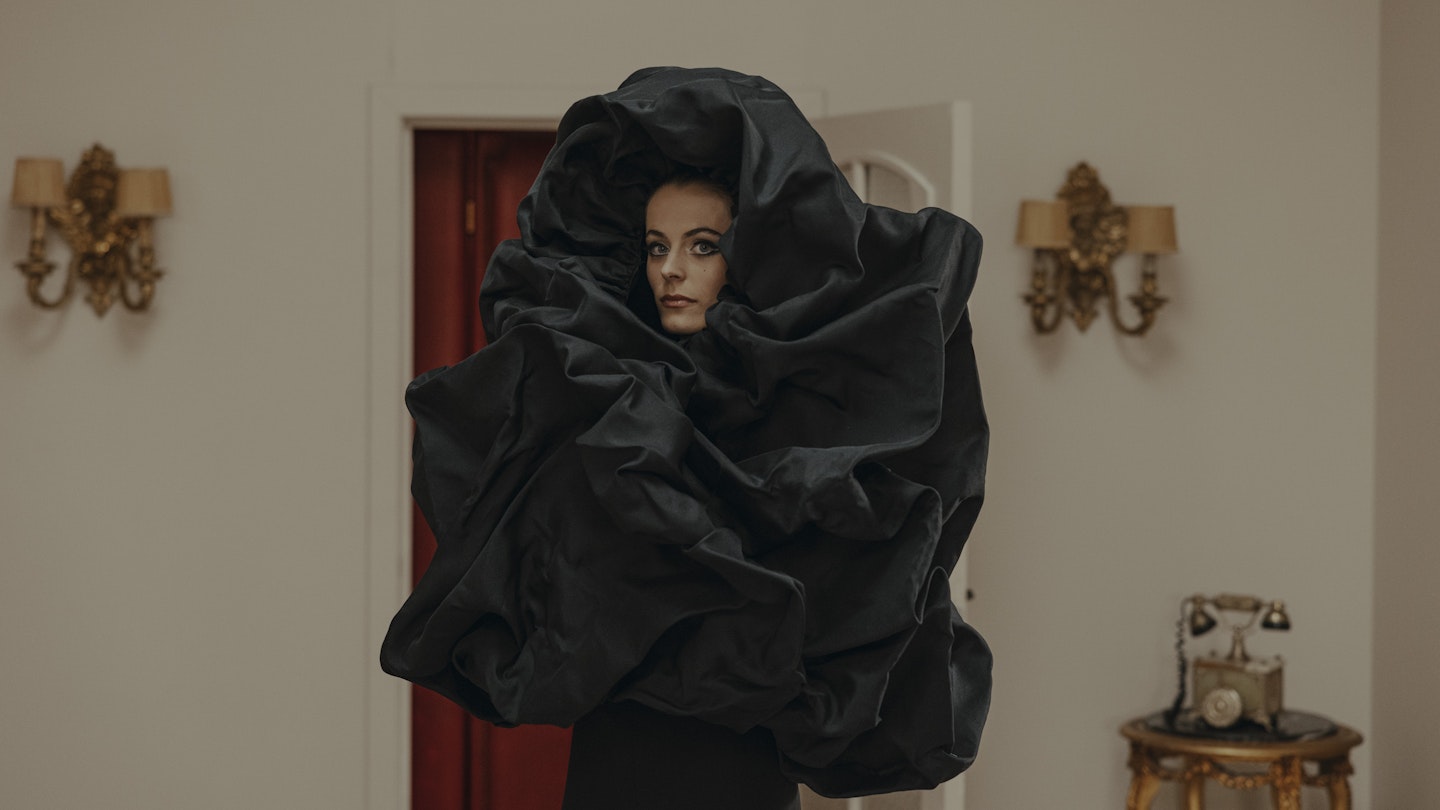How do you distil a 30-year career that reformed fashion, forever altering the way women dress, into just six episodes of television? This was the question facing the creators of Cristóbal Balenciaga, an original drama series on Disney+. Inspired by the life and work of its titular character, the series spans five decades, beginning in the 1970s as Balenciaga – notoriously publicity-shy – agrees to give an interview to Prudence Glynn, a real journalist who became the very first fashion editor at The Times. He recounts to her his 30 years in Paris, which began in 1937 when he arrived after fleeing the Spanish civil war to join the exclusive world of French haute couture. While there’s undoubtedly a challenge in depicting his rich, often complicated life, perhaps more pressing is the question of just how to replicate some of the most famous clothes in fashion history?

The answer, as it turns out, is to hire Bina Daigeler, the costume designer behind Tár and Mrs. America, who has received both Oscar and Emmy nominations. ‘ I was really nervous because Balenciaga is just such an iconic designer,’ Daigeler says. ‘There are pieces that are so special, the way they’re constructed, that it was a huge challenge to make it look real and live up to this haute couture moment we wanted to show.’ And show it they do – the clouds of silk taffeta and puffs of chiffon make you feel like you can reach out and touch them, feel them rustling between your fingers.
As Balenciaga arrives in Paris after years of creating clothes for Spain’s elite, he struggles to find his footing in a world dominated by the likes of Coco Chanel. But the most striking aspect of the Balenciaga collections we see from the start is, as Daigeler says, the fact that they all feel fiercely modern; he truly understood how to dress a woman’s body. The series demonstrates that technicality behind the clothes and Balenciaga’s mastery of fabric. It is meticulous, painstaking and, at times, pedantic. However it leads to a kind of beauty and style the world had never seen before.

There are a lot of costumes in the series; aside from the clothes each character wears, Balenciaga’s most famous creations are on show throughout the series, as are those of Chanel and Christian Dior. Luckily, Daigeler had a strong team assisting her on the project, allowing her to focus on recreating the magic of Balenciaga. ‘It's not just copying, it's really studying and finding the right fabrics was immensely important to be able to copy the pieces. That is a huge challenge because now, the fabrics are completely different. We were lucky to get to the archives so that we could study some original pieces and see how they were made.’
There’s true emotion to each runway show, further heightened by the political backdrop. Balenciaga lived through the Nazi occupation in Paris. He was also gay, something which he denied. Balenciaga’s partner, in both love and business, was Franco-Polish millionaire Wladzio d'Attainville. When d’Attainville died suddenly in 1948, Balenciaga considered entering a monastery and shutting his business. His next collection was in all-black to symbolise his grief.

The politics, in turn, permeate the clothes. Early in the series, some of the hats used by Balenciaga anger the Nazis for their dramatic quality. As a warning, d’Attainville says: ‘You start with big hats and you don’t know where that could lead.’ Does Daigeler think clothes now can carry as much political significance? ‘I think because of industrialisation, it is different now, we all dress the same. It’s mainly fast fashion.’
By the early ‘60s, Balenciaga had truly succeeded, revolutionising a woman’s silhouette and designing for celebrities and royalty around the globe. What does Daigeler wish us to take from this glimpse into Balenciaga’s world?

‘I would say that haute couture is something beautiful, and I am sometimes worried that it will disappear. What I mean is true tailoring and hand-making – there are not enough people who are being trained and want to learn that. Perhaps we should consume less but with more quality. That would be much better for our planet and much better also for us.’
Balenciaga closed his Maison in 1968, after winning the admiration of his fellow designers in Paris – Dior called him ‘the master of us all’ – and a legion of loyal customers. Between the folds of silk, there is perhaps something to be learned from this insight into one of the most transformative moments in fashion’s past that could greatly help us now. As Daigeler puts it: ‘Less is more.’
